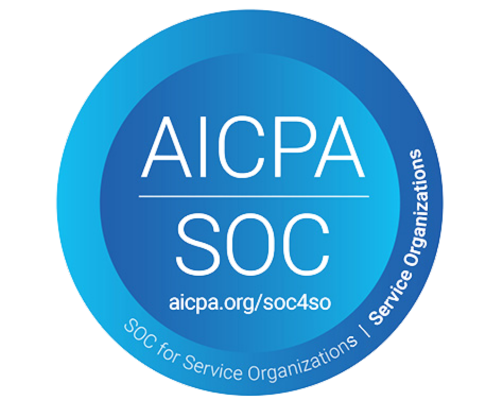Rebuilding American Manufacturing: A 2025 Guide to Tax Credits & Incentives
The Future of Tax Incentives in the Manufacturing Industry
As the U.S. manufacturing sector adapts to economic pressure, evolving technology, and a competitive global landscape, federal and state tax credits are playing an increasingly vital role in sustaining and scaling operations. From innovation to employment, tax incentives have become strategic tools that reward companies for investing in people, processes, and growth.
In 2025, with inflation easing but interest rates still high, manufacturing companies are prioritizing efficiency, and tax incentives can provide a much-needed financial edge.
Let’s break down the key tax incentives shaping the future of U.S. manufacturing and how companies can leverage them to gain ground in a challenging market.
R&D Tax Credits: Fueling Innovation, Not Just Invention
Research & Development (R&D) Tax Credits remain one of the most powerful tools available to manufacturers in 2025. While many associate them with high-tech or pharmaceutical breakthroughs, manufacturers can also qualify by:
- Improving existing products
- Refining production processes
- Developing proprietary software
- Experimenting with alternative materials or designs
Under IRS rules, qualifying activities must involve a process of experimentation and be technological in nature. The key? You don’t need a formal R&D department to qualify—just eligible efforts that meet the IRS’s criteria.
2025 Update: The IRS now requires all R&D expenses under Section 174 to be amortized over 5 years, so claiming the credit is more valuable than ever to offset upfront costs.
Real-World Impact: According to the National Association of Manufacturers (NAM), manufacturers invested nearly $350 billion in R&D in 2024 alone, and the average qualified small to mid-sized firm could save $50,000 to $250,000 annually by properly claiming R&D tax credits.
Investment Tax Credits: Rewarding Infrastructure & Equipment Upgrades
As reshoring and modernization efforts gain traction, many states are incentivizing capital investment with equipment and infrastructure credits.
Examples include:
- Idaho’s Investment Tax Credit – 3% credit on qualified equipment purchases
- Connecticut’s Manufacturing Reinvestment Account Program – Tax-deferred incentives for reinvestment
- New Jersey’s Emerge Program – Credits for capital improvements tied to job creation
Qualifying investments typically include:
- Manufacturing machinery
- Energy-efficient upgrades
- Technology improvements
- Facility renovations
These credits lower the effective cost of expansion and support long-term productivity improvements.
Job Creation & Workforce Tax Credits: Growing with Incentives
Hiring in 2025 remains competitive, particularly in industrial hubs. Job creation credits offer incentives for expanding headcount, retaining talent, or hiring from targeted groups.
Examples include:
- Work Opportunity Tax Credit (WOTC): Up to $9,600 per eligible hire
- Georgia Job Tax Credit: Up to $4,000 per job, per year
- New York Youth Jobs Program: Up to $7,500 per eligible young worker
These programs help offset payroll costs, especially for manufacturers hiring in rural or economically distressed areas.
Disaster Relief Credits: A Lifeline for Impacted Manufacturers
Manufacturing facilities are particularly vulnerable to natural disasters that disrupt supply chains and production. Disaster Relief Credits are designed to support recovery through:
- Retention credits for wages paid during shutdowns
- Equipment replacement or repair reimbursement
- Location-specific tax relief following federal disaster declarations
For example, following Hurricane Harvey, employers in affected counties were able to claim up to $2,400 per retained employee through the enhanced Employee Retention Tax Credit.
In an era of climate unpredictability, these programs have become a vital piece of operational continuity planning.
Where It’s All Headed: AI, Automation, and Tax Strategy
Looking ahead, tax credit legislation is increasingly tied to:
- Workforce development - especially for skilled labor and tech training
- AI-driven process innovation (We’ll explore this further in an upcoming article—stay tuned)
- Clean energy and sustainability investments, particularly under the Inflation Reduction Act extensions
As the IRS tightens scrutiny, documentation and compliance will also become more important. Manufacturers will need expert support and smart tools to track eligibility and submit claims accurately.
Explore Every Applicable Tax Credit with Ryze Incentives Navigator
Ryze Incentives Navigator, our proprietary interactive tax credit map tool, empowers manufacturers to uncover every tax-saving opportunity with ease.
Key Features:
- Access 3,000+ tax credits across federal and state levels
- Location-based mapping to identify region-specific credits
- Real-time estimations based on your workforce, industry, and investments
- User-friendly platform with integrated expert support
- Available to HRlogics partners and clients for enhanced visibility and ROI
Don’t leave money on the table.
Maximize your tax savings with the right tools and expert support.
Explore
Ryze Incentives Navigator today and discover how much your manufacturing business could be saving.






